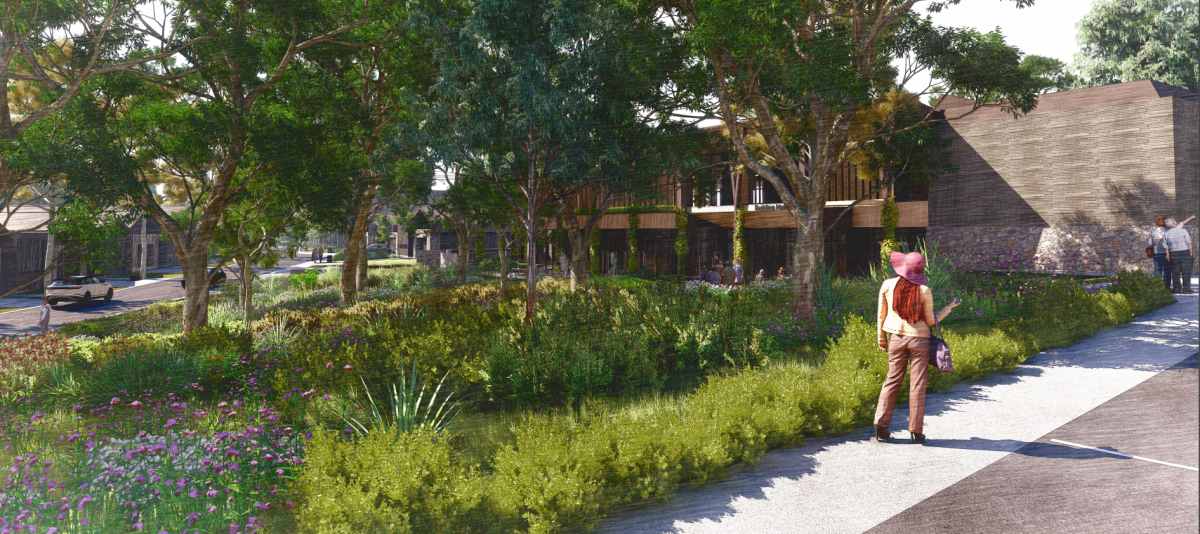
An artist’s impression of the proposed development. Up to 125 homes are planned. Image: GDH.
Federal Golf Club is taking ACAT’s refusal of a development application for its proposed retirement village to the ACT Supreme Court, but significant environmental issues raised in hearings remain unaddressed.
On 18 November last year, the Planning Authority approved a proposal for 125 dwellings, comprising 77 single-storey houses and 48 apartments across six three-storey buildings, as well as a health and wellbeing centre for residents on 6 hectares of the course.
Retirement village operator Mbark is partnering with the club to develop the site.
But in April, ACT Civil and Administrative Tribunal Senior Members David Kerslake and Lincoln Hawkins set aside the approval and later amended that to refuse the DA.
READ ALSO: From stolen car parks to leaky pot plants, what really bugs your neighbours in community living
They have since published their reasons, with the DA falling over due to an administrative mistake – it only carried one signature, the club president’s, when two directors or a director and company secretary needed to sign.
However, the members said they would have sent the DA back to the Planning Authority in any case due to the environmental concerns raised by Friends of Federal Fairways, which is battling to prevent the village from being built.
This would have meant the Conservator of Flora and Fauna reviewing its original conditional green light for the proposal.
FOFF had raised several other issues that the members dismissed, but found inconsistencies between Mbark’s environmental assessment and the expert witnesses for FOFF, such as discrepancies in the counting of trees, particularly hollow-bearing ones for nesting birds, including the endangered Gang Gang cockatoo.
This involved the number of identified regulated trees, the height of certain trees, the nature and importance of tree hollows, the number of hollow-bearing trees that may be removed or affected by the development, the likely impact of removal, and the level of future hollow supply.
“The Tribunal considers the identification of nesting sites for endangered species to be an important environmental concern,” the members said.
They said the number of regulated trees appeared to well exceed the 109 described in the DA submission, when there were some 400 trees on and around the development site.

ACAT says Gang Gang cockatoos’ nesting sites are a significant concern. Photo: Ian Fraser.
Mbark spent a day on the site with an officer of the Conservator, while FOFF’s arborist took a week and still felt rushed.
“We are concerned that the additional information and advice that was adduced in the course of the hearing through the evidence of expert witnesses, along with details of more recent and detailed site surveys, is significant and, if available to the Conservator, may have resulted in the Conservator providing an ESO [Environmental Significance Opinion] which was different in at least some respects from that issued in October 2022; and advice as part of the assessment of the Development Application, which was different in at least some respects,” the members said.
If the DA had gone back to the Planning Authority, they would have recommended that further advice be sought from the Conservator, including consideration of additional evidence and survey information presented at the hearing as well the conduct of any further surveys and assessments deemed necessary, as well as ongoing monitoring specific to the Gang Gang cockatoo.
It would also have allowed the Conservator and the Authority to review and reconsider the scope of the Commonwealth EPBC referral.
READ ALSO: Re-installation of existing engineered stone allowed again in Canberra under conditional exemption
The club remains undeterred, telling members in its latest newsletter that it and Mbark are committed to the retirement village development and are advocating for their best interests and the club’s long-term future.
It describes the development as inevitable and accuses FOFF and a small number of members of jeopardising the club’s future by delaying the proposal.
“The Board’s primary focus over the coming weeks is to devise strategies to mitigate the significant financial risks that are a consequence of the delays in progressing with the over-55 development,” the newsletter says.
A virtually identical DA for the retirement village submitted under the new Planning Act is still being assessed, but whether ACAT’s concerns will be taken on board is not known.
That might not be necessary if the ACT Supreme Court finds in the club’s favour when its appeal is heard in September. Otherwise, the proposal could be headed for a re-run in ACAT.



